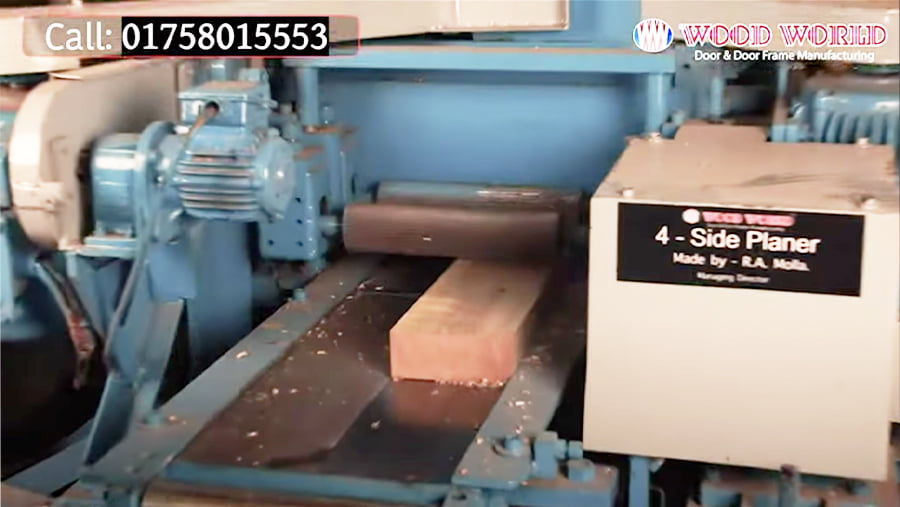
A four-side planer, also known as a thickness planer or a thicknesser, is a woodworking machine used to plane the surfaces of wood to a uniform thickness. This type of planer differs from a single- or double-sided planer in that it can plane the four sides of a piece of wood in a single pass, making it much more efficient and cost-effective for mass production or high-volume work.
The basic operation of a four-side planer involves feeding a piece of wood through the machine, where it is passed between a set of rotating knives or cutters. These knives shave off a thin layer of wood from all four sides, producing a uniform and smooth surface. The thickness of the final product can be adjusted by adjusting the height of the knives or by using different thickness planer knives.

Four-side planers come in a range of sizes and capacities, from small benchtop models for hobbyists or small-scale work to large industrial models for mass production. Some four-side planers may also be equipped with additional features like adjustable feed rates, infeed and outfeed rollers, and dust collection systems to help ensure consistent and accurate results.
One of the benefits of using a four-side planer is that it can significantly speed up the process of producing planed wood for use in furniture, cabinetry, flooring, and other applications. It can also produce wood that is more consistent in thickness and surface quality, reducing the need for additional sanding or finishing work.

However, it’s important to note that using a four-side planer requires a high level of skill and knowledge, as well as proper training and safety precautions. Incorrect use of the machine can result in injury or damage to the wood, so it’s essential to follow the manufacturer’s guidelines and safety recommendations when operating a four-side planer.
In conclusion, a four-side planer is a valuable tool for woodworkers and woodworkers who need to produce uniform and smooth planed wood quickly and efficiently. Whether you’re a professional woodworker or a hobbyist, it’s essential to have a good understanding of the machine’s capabilities, limitations, and safety requirements to ensure optimal results.



